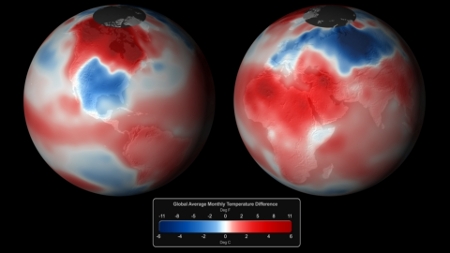Cold? No, Warm, NOAA Explains
If you thought all that snow and cold in February knocked a gaping hole in the climate change theory, the scientists at the National Oceanic and Atmospheric Administration have some data that helps us decipher what went on. It turns out, according to the agency, that February was the sixth warmest ever recorded. It just didn't feel that way to those living in most of the United States, Mexico and Europe. The above <a href=http://www.nnvl.noaa.gov/MediaDetail.php?MediaID=390&MediaTypeID=1>image</a> says it all.

Some in Washington thought all that snow and cold in February knocked a gaping hole in the climate change theory, but the scientists at the National Oceanic and Atmospheric Administration have some global data that helps us decipher what went on. It turns out, according to the agency, February was the sixth warmest ever recorded. It just didn't feel that way to those living in most of the United States, Mexico, Europe and a large part of Asia. The above image says it all.
Instead of simply reporting the weather data and image, NOAA officials wrote this short explanation at the bottom of the image to clear up any lingering misunderstandings about confusing local weather with long-term global trends:
Last month's combined global land and ocean surface temperature made it the sixth warmest February ever recorded. However, temperatures in the United States were considerably cooler than the historical climate average. These disparities are an excellent example of the difference between regional versus large scale temperatures, or weather versus climate trends. It is possible to have local warming or cooling without affecting large scale global climate trends.
NEXT STORY: Should All Texts Be Private?


